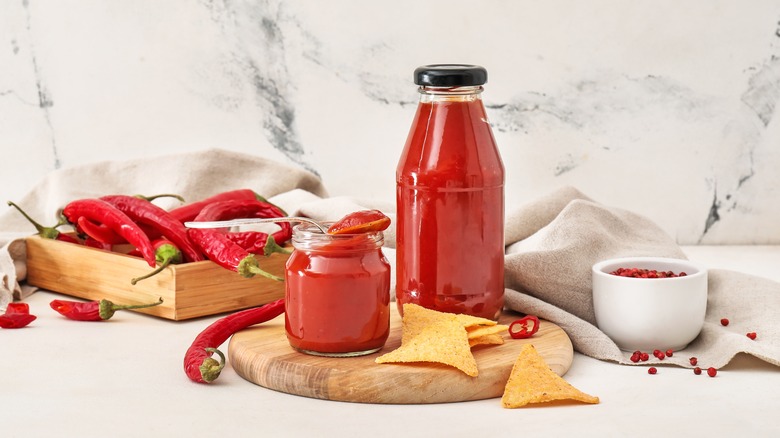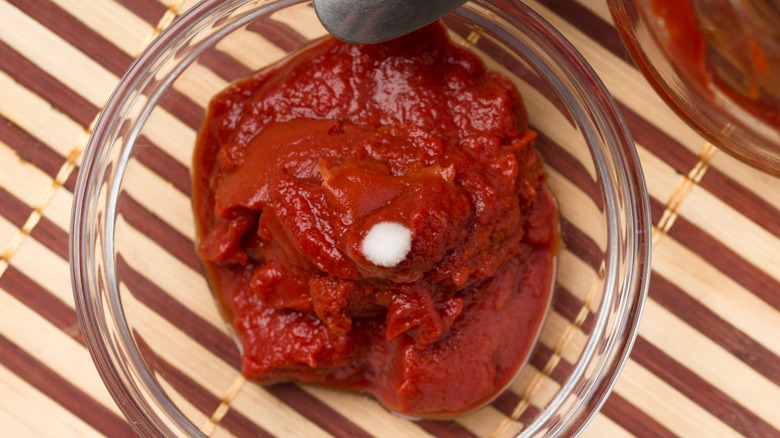How Long You Can Store Opened Chili Sauce In The Fridge
Sometimes you buy a condiment that you don't usually use in daily cooking that might end up in the back of your fridge for far too long. For example, a bottle of chili sauce is used in specific dishes like a batch of slow-cooked meatballs, but rarely is the entire jar needed. When you look at the jar, there's an expiration date, but that doesn't mean an opened jar of cocktail sauce will last until it expires. So how long can you store opened chili sauce in the refrigerator? According to guidelines from the Food and Drug Administration, it will last for six months.
Six months is the FDA's guidance for ketchup and cocktail sauce after they're opened, as well. In order for the condiment to stay fresh for months, it's essential to store it in the fridge properly. Ideally, you should keep it in the jar that it came in and close it tightly to prevent air from being trapped in the jar. If you don't have the original jar for some reason (or you're one of those people who likes to put foods in reusable containers before they go in the fridge), use an airtight container that fully seals. And in case you're wondering, chili crisp or chili oil can last up to two years in the fridge.
Signs of bad chili sauce
If you're worried that the chili sauce has spoiled, there are a few surefire ways to know if it's time to eat it or toss it in the garbage (after recycling the jar, of course). First, check for signs of mold by looking for any blue or white discoloration. Do you see any signs of mold? If so, toss it out. If not, take a sniff of the sauce, and if there's any foul or rancid odor, it's likely gone bad. As a final resort, look to see if it's turned watery or the color has changed, both signs of a spoiled condiment.
We're all about preventing food waste, and there are many unconventional ways to use that chili sauce before it spoils. If you're serving shrimp cocktail soon, use it to make a homemade cocktail sauce. Chili sauce is not that much different from ketchup, with the exception of its mildly spicier flavor, so make the swap with a batch of fries or use it on a burger or sandwich for a kick of tomatoey heat. You can also use up the tangy condiment in a pot of chili, meatloaf, or spaghetti.

